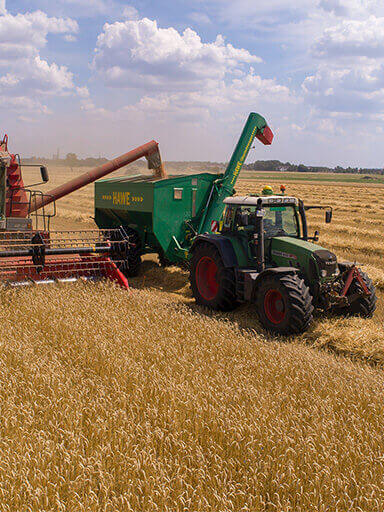Everything You Need to Know About Elbow Injury Compensation in the UK
If you’ve suffered an elbow injury in the UK, you may be entitled to compensation. Elbow injuries can occur due to various reasons, such as
- accidents at work,
- sports-related incidents,
- or even slips and falls.
- or accidents in a public place
- or road traffic accidents
- or a fall from height
Understanding your rights and the legal processes involved in pursuing an elbow injury compensation claim is essential to ensure you receive the support you deserve.
In this comprehensive guide, we will walk you through everything you need to know about elbow injury compensation in the UK. From the types of elbow injuries commonly encountered to the steps involved in making a claim, we will provide you with the information you need to navigate the legal landscape and maximize your chances of success.
Whether you’re dealing with
- a fractured elbow,
- tennis elbow,
- golfer’s elbow,
- or any other elbow-related injury,
this article will equip you with the necessary knowledge to make informed decisions about your case. So, if you’re ready to learn more about elbow injury compensation in the UK, keep reading!
Understanding the UK legal system for compensation claims
Seeking compensation for an elbow injury requires a basic understanding of the UK legal system. In the UK, personal injury claims, including those related to elbow injuries, fall under the purview of civil law. To establish a successful compensation claim, you must prove that another party was negligent or at fault for your injury.
The process typically begins by consulting with a solicitor who specializes in personal injury law. They will assess the merits of your case and advise you on the best course of action. It’s important to note that there is a time limit for filing an elbow injury compensation claim, known as the statute of limitations. In most cases, you have three years from the date of the accident or injury to make a claim.
Types of elbow injuries eligible for compensation
Elbow injuries can range from mild to severe, depending on the nature of the accident or incident. Some common types of elbow injuries that may be eligible for compensation include:
1. Fractured Elbow: A fractured elbow occurs when one or more of the bones in the elbow joint break. This type of injury can be extremely painful and may require surgery to realign and stabilize the bones.
2. Tennis Elbow: Tennis elbow, also known as lateral epicondylitis, is a condition caused by repetitive motions of the forearm and wrist. It typically results in pain and tenderness on the outside of the elbow.
3. Golfer’s Elbow: Golfer’s elbow, or medial epicondylitis, is similar to tennis elbow but affects the inside of the elbow. It is characterized by pain and inflammation in the tendons that connect the forearm muscles to the inside of the elbow.
4. Dislocated Elbow: A dislocated elbow occurs when the bones in the elbow joint are forced out of their normal position. This can happen due to a sudden impact or a fall onto the outstretched arm.
Factors affecting the amount of compensation
The amount of compensation you may be entitled to for an elbow injury depends on several factors. These factors are considered during the claims process to determine a fair and reasonable amount of compensation. Some of the key factors include:
1. Severity of the Injury: The severity of your elbow injury plays a significant role in determining the amount of compensation you may receive. More severe injuries that result in long-term disability or require extensive medical treatment generally attract higher compensation amounts.
2. Impact on Daily Life: If your elbow injury affects your ability to carry out daily activities or hinders your ability to work, it may result in higher compensation. For instance, if you are unable to perform your job duties or require modifications to your home to accommodate your injury, these factors will be taken into consideration.
3. Financial Losses: Compensation claims also consider any financial losses you have incurred as a result of your elbow injury. This may include medical expenses, loss of earnings, rehabilitation costs, and any future financial impact related to the injury.
How to make an elbow injury compensation claim
Filing an elbow injury compensation claim involves several steps that must be followed carefully. Here’s a general overview of the process:
1. Consult with a Solicitor: The first step is to consult with a solicitor who specializes in personal injury claims. They will assess the merits of your case and guide you through the claims process.
2. Gather Evidence: To support your claim, it’s crucial to gather relevant evidence. This may include medical records, accident reports, witness statements, and any other documentation that can strengthen your case.
3. Assessing Liability: Your solicitor will investigate the circumstances surrounding your injury to establish liability. They will determine who was at fault and gather evidence to support your claim.
4. Negotiating Settlement: Once liability is established, your solicitor will enter into negotiations with the responsible party’s insurance company to reach a fair settlement. If a settlement cannot be reached, your solicitor may recommend taking the case to court.
5. Court Proceedings: If your case goes to court, your solicitor will represent you and present your case before a judge. The judge will then determine the amount of compensation you are entitled to based on the evidence presented.
The importance of gathering evidence for your claim
When pursuing an elbow injury compensation claim, gathering evidence is crucial to strengthening your case. The more evidence you have to support your claim, the higher your chances of success. Here are some key pieces of evidence that can significantly impact your claim:
1. Medical Records: Medical records, including doctor’s reports, x-rays, and scans, provide objective evidence of your injuries and their impact on your health.
2. Accident Reports: If your elbow injury occurred in a specific accident, such as a workplace incident or a road traffic accident, obtaining the official accident report can help establish liability.
3. Witness Statements: Eyewitness accounts can provide valuable testimony to support your claim. Collect statements from anyone who witnessed the accident or incident that led to your elbow injury.
4. Photographs and Videos: Visual evidence, such as photographs or videos of the accident scene and your injuries, can be compelling evidence in establishing liability and the severity of your injury.
Working with a solicitor for your compensation claim
Navigating the legal landscape can be complex, especially when dealing with a personal injury claim. Working with a solicitor who specializes in elbow injury compensation claims can significantly improve your chances of success. Here’s how a solicitor can assist you:
1. Expert Advice: A solicitor will provide expert advice tailored to your specific case. They will assess the merits of your claim, guide you through the legal process, and ensure you understand your rights and obligations.
2. Negotiation Skills: Your solicitor will negotiate with the responsible party’s insurance company on your behalf, aiming to secure the maximum amount of compensation possible. They will use their expertise and knowledge of personal injury law to advocate for your rights.
3. Court Representation: If your case goes to court, having a solicitor represent you is essential. They will present your case before a judge, cross-examine witnesses, and argue on your behalf to ensure your best interests are protected.
Common challenges in elbow injury compensation claims
While pursuing an elbow injury compensation claim, you may encounter various challenges along the way. It’s important to be aware of these potential obstacles and how to overcome them. Here are some common challenges:
1. Insurance Company Tactics: Insurance companies may try to minimize the value of your claim or deny liability altogether. Having a solicitor who understands these tactics can help protect your rights and ensure you receive fair compensation.
2. Incomplete Documentation: Failing to gather all the necessary evidence or provide complete documentation can weaken your claim. Be diligent in gathering medical records, accident reports, and witness statements to strengthen your case.
3. Delays in the Claims Process: The claims process can sometimes be lengthy, with negotiations and court proceedings taking time. It’s important to be patient and work closely with your solicitor to navigate the process efficiently.
Conclusion and next steps
Seeking compensation for an elbow injury in the UK requires a thorough understanding of the legal processes involved. From understanding the types of elbow injuries eligible for compensation to filing a claim and working with a solicitor, this guide has provided you with the necessary information to pursue your case effectively.
Remember, gathering evidence, understanding the factors that affect the amount of compensation, and being aware of common challenges can significantly impact the outcome of your claim. If you’ve suffered an elbow injury, consult with a solicitor specializing in personal injury claims to assess the merits of your case and guide you through the legal process.
By taking the necessary steps and seeking professional advice, you can increase your chances of receiving the compensation you deserve for your elbow injury in the UK.
Let us help you





